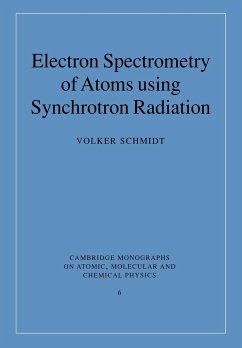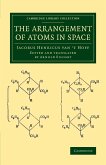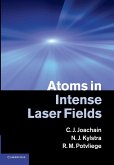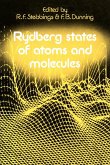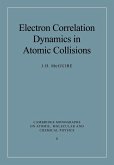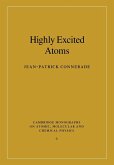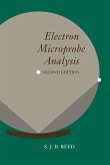This monograph describes the theory and practice of electron spectrometry using synchrotron radiation.
This monograph describes the theory and practice of electron spectrometry using synchrotron radiation. The book is in three parts. After a short review of background theory, neon is used to elucidate the principles of the photoelectron and Auger spectra. The second part of the book looks at experimental aspects, including characteristic features of electrostatic analysers, detectors, lenses, disturbances, and optimisation, and then illustrates theory and experiment with details of recent experiments. The third part provides useful reference data, including wavefunctions, special theory, polarisation and special aspects of instrumentation. A detailed reference list completes the volume. The study of electron spectrometry using synchrotron radiation is a growing field of research driven by the increasing availability of advanced synchrotron radiation light sources and improved theoretical methods for solving the many-electron problem in atoms. This balanced account will be of value to both theorists and experimentalists working in this area.
Table of content:
Part A: A. I. Introduction; A. II. Photoelectron spectrum of neon; A. III. Auger spectrum of neon following 1s ionization; Part B. 1. Experimental Aspects: 1. The dispersive element of electron energy analyzers; 2. Characteristic features of electrostatic analyzers; 3. Electron detectors; 4. Electrostatic lenses; 5. Disturbances of the performance; 6. Electron-electron coincidences; Part B. II. Recent Examples: 1. Electron emission around the 4d ionization threshold in xenon; 2. 2p photoionization in magnesium; 3. 3s Satellite spectrum of argon; 4. Spin-polarization of 5p3/2 photoelectrons in xenon; 5. Post-collision interaction between 4d5/2 photoelectrons and N5-O23O23 1S0 Auger electrons in xenon; 6. Threshold double photoionization in argon; Part C. I. Useful Reference Data: 1. Atomic units; 2. Some spectroscopic data for calibration purposes; Part C. II. Wavefunctions; 1. One-electron wavefunctions; 2. Evaluation of determinental wavefunctions; 3. Hartree-Fock approach; 4. Mixing of wavefunctions; 5. Recasting of correlated wavefunctions in helium (ground state); Part III. Special Theoretical Aspects: 1. Photon-atom interaction and photoionization matrix elements; 2. Different formulation and approximations for photoionization; 3. Photon-induced L3-M1M1 Auger decay in magnesium described as one- and two-step processes; 4. Derivation of angular distributions by means of statistical tensors; 5. Angular distribution and alignment of L3-M1M1 Auger electrons in magnesium; Part C. IV. Polarization Properties: 1. Angular distributions for different light pPolarizations; 2. Description of electron and photon polarization; Part C.V. Special Instrumental Aspects: 1. Time-of-flight analysis of electrons; 2. Optical properties of cylindrical mirror analyzers; 3. Supplements to electrostatic lenses; 4. Convolution procedures; 5. Solid angle corrections; 6. Shielding of the earth's magnetic field; 7. Formation of a gas beam by capillaries; References; Index.
Hinweis: Dieser Artikel kann nur an eine deutsche Lieferadresse ausgeliefert werden.
This monograph describes the theory and practice of electron spectrometry using synchrotron radiation. The book is in three parts. After a short review of background theory, neon is used to elucidate the principles of the photoelectron and Auger spectra. The second part of the book looks at experimental aspects, including characteristic features of electrostatic analysers, detectors, lenses, disturbances, and optimisation, and then illustrates theory and experiment with details of recent experiments. The third part provides useful reference data, including wavefunctions, special theory, polarisation and special aspects of instrumentation. A detailed reference list completes the volume. The study of electron spectrometry using synchrotron radiation is a growing field of research driven by the increasing availability of advanced synchrotron radiation light sources and improved theoretical methods for solving the many-electron problem in atoms. This balanced account will be of value to both theorists and experimentalists working in this area.
Table of content:
Part A: A. I. Introduction; A. II. Photoelectron spectrum of neon; A. III. Auger spectrum of neon following 1s ionization; Part B. 1. Experimental Aspects: 1. The dispersive element of electron energy analyzers; 2. Characteristic features of electrostatic analyzers; 3. Electron detectors; 4. Electrostatic lenses; 5. Disturbances of the performance; 6. Electron-electron coincidences; Part B. II. Recent Examples: 1. Electron emission around the 4d ionization threshold in xenon; 2. 2p photoionization in magnesium; 3. 3s Satellite spectrum of argon; 4. Spin-polarization of 5p3/2 photoelectrons in xenon; 5. Post-collision interaction between 4d5/2 photoelectrons and N5-O23O23 1S0 Auger electrons in xenon; 6. Threshold double photoionization in argon; Part C. I. Useful Reference Data: 1. Atomic units; 2. Some spectroscopic data for calibration purposes; Part C. II. Wavefunctions; 1. One-electron wavefunctions; 2. Evaluation of determinental wavefunctions; 3. Hartree-Fock approach; 4. Mixing of wavefunctions; 5. Recasting of correlated wavefunctions in helium (ground state); Part III. Special Theoretical Aspects: 1. Photon-atom interaction and photoionization matrix elements; 2. Different formulation and approximations for photoionization; 3. Photon-induced L3-M1M1 Auger decay in magnesium described as one- and two-step processes; 4. Derivation of angular distributions by means of statistical tensors; 5. Angular distribution and alignment of L3-M1M1 Auger electrons in magnesium; Part C. IV. Polarization Properties: 1. Angular distributions for different light pPolarizations; 2. Description of electron and photon polarization; Part C.V. Special Instrumental Aspects: 1. Time-of-flight analysis of electrons; 2. Optical properties of cylindrical mirror analyzers; 3. Supplements to electrostatic lenses; 4. Convolution procedures; 5. Solid angle corrections; 6. Shielding of the earth's magnetic field; 7. Formation of a gas beam by capillaries; References; Index.
Hinweis: Dieser Artikel kann nur an eine deutsche Lieferadresse ausgeliefert werden.

